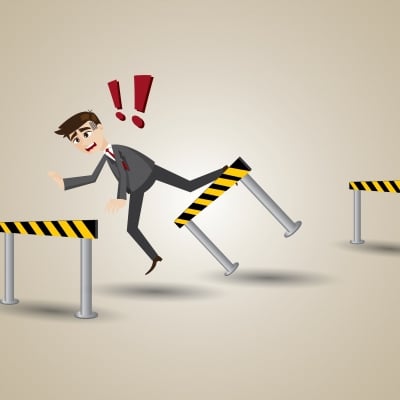 The consequences of falls such as pain, injury, immobility and so on, cause a huge amount of anxiety in people which further increases their risk of falling! Therefore, it is important to identify the risks and prevent falls where possible. Below is a list of questions and tests that you can do to help identify these risks. They have been written with reference to the Guidebook for Preventing Falls and Harm from Falls in Older People: Australian Community Care (2009) published by the Australian Commission on Safety and Quality in Healthcare.
The consequences of falls such as pain, injury, immobility and so on, cause a huge amount of anxiety in people which further increases their risk of falling! Therefore, it is important to identify the risks and prevent falls where possible. Below is a list of questions and tests that you can do to help identify these risks. They have been written with reference to the Guidebook for Preventing Falls and Harm from Falls in Older People: Australian Community Care (2009) published by the Australian Commission on Safety and Quality in Healthcare.
Do you have the following?
1. Previous falls.
2. Take 4 or more medications regularly.
3. Drink a large amount of alcohol.
4. Lightheadness when you stand up from sitting or lying down.
5. Hearing problems.
6. Vision problems.
7. Lose your balance when you walk or when you change body position.
8. Confusion (in memory or orientation).
9. Continence issues.
10. Environmental hazards. (e.g. loose rugs, wires, or other trip hazards.)
11. Feet problems (e.g. poor footwear, long toe nails, deformities, etc.)
How good is your balance?
These are 5 simple tests you can do to assess your balance.
Please do the test that you feel safe to do only. To ensure safety, you may also like to have someone standing close-by; and/or stand near a place with a sturdy rail; and/or have your walking aid at a reachable distance; and/or stand with a sturdy bed or chair close by so that you can sit down if you need to.
To get a true picture of your balance, make sure that you are NOT actually using your walking aid or leaning on or against something when doing the tests.
To time yourself, have a stop watch ready or ensure you have a clear view of a clock with a visible “second” hand.
1. Chair stand test: Lean a chair against the wall, now stand up and sit down 5 times as quickly as you can. Time yourself using a stopwatch. Allow yourself a maximum of 2 minutes to complete the test.
2. 4 test balance scale: Do these without any walking aid or support and with your eyes open.
a. Stand with your feet touching together for 30 seconds.
b. Stand with half your feet touching together, i.e. one foot halfway ahead of the other foot, for 10 seconds.
c. Stand with the toes of one foot touching the heel of the other for 10 seconds.
d. Stand on one leg for 30 seconds.
If you answered “yes” to any of the questions above or struggle in any of the balance tests, you can benefit from participating in the Otago Compreshensive program by My Rehab Team. This is a program designed for improving balance. It helps to reduce some of the unnecessary anxiety and risks of falling. Our team of mobile health and rehabilitation professionals offer home safety assessment and advice, foot health care, and implement the Otago exercises program. The Otago exercises program has been shown to reduce falls by 35%. (http://www.acc.co.nz) and is a listed falls prevention strategy in the Guidebook already mentioned.
For more information, please contact our mobile rehab team or neurological rehabilitation service. We are also found on the Medibank Private physiotherapy, occupational therapy, and podiatry providers list.
Image courtesy of iosphere, at Free Digital Photo. [Online] Available at: http://www.freedigitalphotos.net/images/cartoon-businessman-with-obstacle-photo-p261902 (Accessed on 14th December, 2014)

